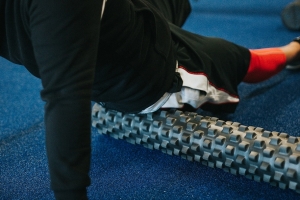For many, a hip labral tear can feel like a deep pain in the hip, emanating from the joint. It’s important to remember that both men and women can experience hip pains and labral tears. They are not necessarily associated with age – older adults and young athletes or dancers can experience hip pains, too.
Some common causes of hip pain include:
· Arthritis – pain from joint inflammation
· Tendonitis – pain in the tendons resulting from overuse of the muscles
· Hip fracture – resulting from injuries or brittle bones
· Muscle strain – repeated activities that strain the muscles
· Hip labral tear – damage in the acetabular labrum
With the conditions mentioned above, there are several reasons why people may feel pain in their hip area, but in this specific post, we will be discussing hip labral tear as a possible reason causing hip problems.
You may have heard of a hip labral tear, and if the persistent pain you often feel in your hip has you asking, "What does a hip labral tear feel like?" then it’s worth investigating the causes further.
What is a Labral Tear?
The hip joint comprises the femur and the pelvis, and it is the largest "ball and socket" joint in the body. The ball (femoral head) fits into the socket (acetabulum) – located in the pelvis – and this skeletal structure facilitates motions such as walking, running, and climbing.
A ring of cartilage called the acetabular labrum surrounds the hip joint's socket, which is responsible for the smooth operation of the hip joint during activities. Damage to the labrum is called a labral tear.
Older adults and athletes involved in activities such as soccer, football, weightlifting, running, ballet, or golf stand a risk of developing labral tears. Patients who have previous records of hip injuries or conditions are also at a high risk of developing a labral tear.
So, what does a hip labral tear feel like?
Now that you have a good idea about what a labral tear is, we will delve into some further signs of a hip labral tear to help you accurately identify the discomfort in your hip.
Some Hip Labral Tear Symptoms
Depending on the type of labral tear it is and the severity of the tear, a hip labral tear pain may feel different for each person. Some signs of hip labral tear you may experience include:
· Clicking, locking or catching sensation when you move
· Deep hip pain
· Limited range of motion in your hips
· Pain in your groin and buttocks area
· Stiffness in your hips
· Worsening pains as you stand, walk or do certain activities
· Difficulty walking for a long period
· Limping
You could experience several symptoms with a hip labral tear, or even just one of these. However, it is possible to have a labral tear without any symptoms. In this case, only a qualified physician can help you determine if you have hip labral damage.
Determining the cause of your hip pain is the first step for physicians to point you in the right direction for appropriate treatment.
Most Common Causes of Hip Labral Tears
Several injuries and activities, including the following, can cause hip labral tears:
1. Trauma to the Hip Joint
Hip joint injuries or dislocation from auto accidents, falls, or contact sports such as football or ice hockey can damage your hip labrum.
2. Hip Impingement
Also known as femoroacetabular impingement, hip impingement is a hip joint disorder where the femoral head (ball) and acetabular labrum (socket) bump against each other repetitively, causing labral damage. While some individuals are born with a deformed ball-and-socket joint, athletes who do certain sports such as hockey, football, or soccer can also develop hip impingement.
3. Repetitive Motion
Over time, physical activity, such as running or cycling, can wear and cause hip labral damage. As a result of overuse and repetitive motion, it can place strain on the soft tissue known as the labrum.
Getting Help for Your Hip Labral Tear
Labral tears will not heal on their own and will likely worsen over time if not attended to by a physician. With this, immediate treatment is advised to improve painful symptoms and prevent further damage.
Once your physician confirms that your hip condition stems from a hip labral tear, the next step would be to determine the most appropriate method of treatment.
Depending on the cause and severity of the condition, hip labral tear treatment consists of medications, physical therapy, and surgery.
For minor labral tears, a doctor will often prescribe specific physical therapy exercises to improve range of motion and build strength and stability in your hip. Another treatment option is the injection of corticosteroids into your hip joint to control pain, or your doctor may recommend medications such as Ibuprofen or aspirin to reduce inflammation and relief pain in the hip joint.
The American Hip Institute’s Extensive Treatment Options for Hip Labral Tear
For persistent or more severe symptoms, your physician may recommend arthroscopy surgery, a minimally invasive surgical procedure for fixing a range of joint problems. At The American Hip Institute, once we’ve identified, our hip arthroscopy surgery involves the immediate repair of labral tear using specialized instruments to make small incisions in the skin.
Our practitioners take special care in treating patients, so you can rest assured knowing that you will recover properly and get back to sports and other activities you enjoy as soon as possible, with minimal discomfort.
Contact us and our experienced medical professionals will help you effectively treat and address your hip-related issues.




